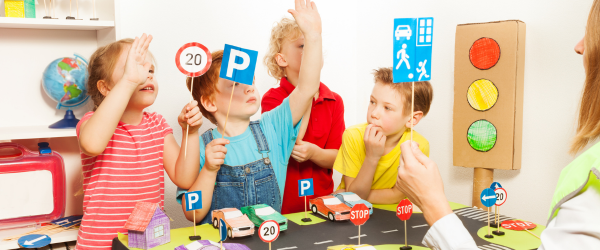Road safety for kids
This week is National Road Safety Week. Injuries are the leading cause of death of Australian children under 15. One injury that continues to claim the lives of Australian children are traffic injuries. In the last 12 months, 1,200 people have died and 44,000 were injured on Australian roads. It’s important that road rules are understood and enforced to protect everyone’s safety, especially children.
National Road Safety Week runs from 14 to 21 May. For each day of the week, there will be a different road theme. The Road Safety Week website has listed these themes and have included educational resources on each. They hope to improve road safety awareness amongst Australian’s. If you would like to access these resources, you can obtain them here.
Road safety is best taught to children in real life settings. Young people tend to absorb information and directives given to them by adults. Therefore, as adults it’s important that we model safe road practices to them.
Road safety tips for young children
Here are some tips for teaching road safety to young children.
If your child rides a bike, scooter or skateboard, ensure they always use a helmet and safety equipment. Spend some time educating them about the importance of safety equipment and how it can protect them from injury. You should also teach them about how to safely cross the road. For instance, following the ‘stop, look, listen and think’ rule.
Some more tips for teaching road safety to children include; explaining the importance of using a sidewalk when walking near roads, not playing on roads or driveways, and teaching them about different signals and road rules.

Role modelling road safety as adults
As adults, we should be extra vigilant about following road rules and road safety, all the time. Children are quick to pick up on our own actions, therefore we should be extra mindful that we are ALWAYS doing the right thing.
Things to be extra conscious of include wearing our seat belts properly, obeying road rules and signs, not being distracted when driving and making eye contact with other road users. We should also ensure we're being safe when crossing roads, ourselves. When walking near roads we should walk on the sidewalks and wear visible clothing.
There are many ways that you can help to keep children safe around roads. When walking with them, you should always hold their hand, especially when crossing. Additionally, if you are walking them to school or through car parks, you should always supervise them.
If you’re travelling with a child under the age of seven, it’s important that you ensure they’re restrained in a properly fastened child restraint (and one that complies with Australian safety standards).
Resources
There are plenty of free online resources available for children and parents about road safety.
The Queensland Government StreetSmarts website has a Road Safety Quiz for Kids and Teens. Additionally, they have plenty of downloadable resources to print and use for young children, learner drivers and adults.

